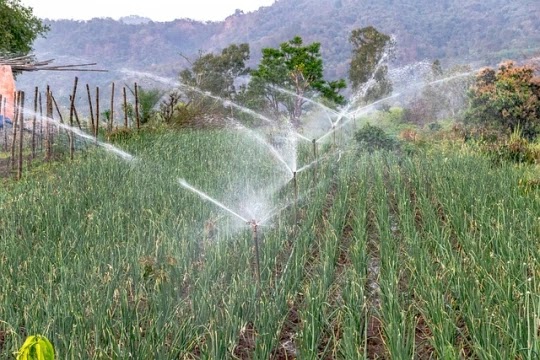Irrigation System in Nepal
The history of irrigation development in Nepal before 1992 shows that the irrigation system was developed, operated, and maintained by farmers called Farmer Managed Irrigation System (FMIS). After that, the government of Nepal started to make efforts for the development of irrigation infrastructures in Nepal. The irrigation system in Nepal can be broadly divided into the following two parts:
- Irrigation System in Plains/Terai
- Irrigation System in Hills/ Hill Irrigation System
The irrigation system in plains (Terai regions) is usually of canal irrigation type which consists of diversion headworks, canal networks, and canal structures (cross drainage structure, canal falls/drops, cross regulators, head regulators, outlets, escapes, etc). On other hand, the hill irrigation system is a small system that taps water from small streams & river tributaries & consists of narrow, deep, and long canals with steep slopes. Sprinklers & drip irrigation systems are usually suitable for hilly regions of Nepal.
Specific Consideration for Hill Irrigation System
1. Social Arrangements
The irrigation system adopted in hills needs to be appropriate to the culture of different ethnic groups living in hilly regions. Junior and senior water rights should also be kept in mind while designing irritation systems in hills. Village boundaries may also affect the layout of the distribution network of the irrigation system.
2. Managerial & Institutional Constraints
If farmers in the hilly regions lack managerial & institutional capabilities & cannot be trained effectively within the available time period, then the distribution system should be simplified and control structures should be minimized. The regulating structures should be made easy to operate by local farmers.
3. Agricultural Considerations
The irrigation system proposed should also be compatible with the type of soil present in the hilly region. Also, the irrigation system should be suitable for the type of crops to be cultivated in hilly areas.
4. Financial Considerations
The choice of technology, methods of construction, type of materials to be used, etc may be restricted due to financial limitations.
5. Design Considerations
- Farmers' Participation in Engineering Design
Because of intimate familiarity with the local conditions, farmers may help to better estimate the design flood discharge, flood level in the river, boulders & sediments carried by the river, etc. By providing these facts, farmers can help designers to avoid costly mistakes.
- Field-Based Design
Decisions regarding where to place the structure, what type of structure to be built, etc should be taken in the field since the structures in hills are affected by various topographical factors of the hilly region.
- Design Standards
Design standards while designing structures in hill irrigation systems should be considered wisely. Adoption of higher design standards (structural & operational) may be unrealistic as the structures built in hill irrigation systems are subject to frequent flooding, landslides, rock falls, soil erosion, etc.
- Canal Design
Large canal sections should not be built on unstable hill slopes. Canal beds may be steep to increase the flow velocity & thus to reduce the seepage loss via canal beds. Canal linings may be done with locally available materials in hilly regions.

If you clarify the canal types and outlet types in this post, it will be much better.
ReplyDeleteThank you for this post.